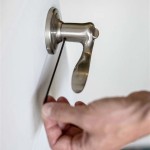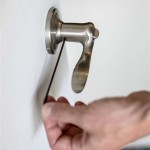Bathroom Sink Floor Drain Assembly Diagram: A Comprehensive Guide
Bathroom sink floor drains are essential components of plumbing systems, effectively channeling wastewater away from the sink area to prevent flooding and maintain sanitation. Understanding the assembly diagram of a floor drain is crucial for successful installation, maintenance, and troubleshooting. This article provides a comprehensive guide to bathroom sink floor drain assembly diagrams, delving into their key features, components, and functionalities.
Understanding the Purpose and Components
A bathroom sink floor drain assembly diagram visually depicts the structure and interconnection of various parts that work together to facilitate water drainage. The primary function of a floor drain is to collect and direct wastewater from the sink, preventing it from accumulating on the floor. The diagram typically showcases the following components:
- **Drain Body:** This is the main housing of the floor drain, usually made of durable materials like ABS plastic or cast iron. It encompasses the drain opening, strainer, and connection points for other components.
- **Strainer:** This component prevents debris and larger objects from entering the drainpipe, promoting smoother drainage and reducing clogs. It's often made of metal, plastic, or rubber.
- **Drainpipe:** Usually made of PVC or ABS plastic, this pipe connects the drain body to the main sewer line, transporting wastewater away from the bathroom.
- **Trap:** This essential part prevents sewer gases from entering the bathroom, creating a barrier with a water seal. It can be incorporated into the drain body or be a separate component.
- **Cleanout:** This optional feature allows access for cleaning and maintenance, typically located on the drainpipe, enabling easy removal of clogs or debris.
- **Gasket:** A rubber or silicone gasket ensures a watertight seal between the drain body and the floor, preventing leaks.
Reading and Interpreting the Diagram
Bathroom sink floor drain assembly diagrams are generally easy to understand, typically employing a combination of visual representations and labels. The diagram usually depicts a cross-sectional view of the floor drain, showcasing the internal structure and components. Here's a breakdown of how to interpret a typical assembly diagram:
- **Identify the Drain Body:** The drain body is the central element of the diagram, clearly marked with an outline and dimensions. It showcases the drain opening and the connection points for the other components.
- **Locate the Strainer:** The strainer is usually depicted as a circular or rectangular piece positioned over the drain opening, with visible slots or perforations for water drainage. It may be labelled with its material or type.
- **Trace the Drainpipe:** The drainpipe connects the drain body to the main sewer line. The diagram clearly identifies its length, size, and material (PVC or ABS). The diagram might also show its connection to the trap, if applicable.
- **Recognize the Trap:** The trap can be integrated into the drain body or be a separate component. It's often depicted as a curved pipe or a chamber with a water seal. The trap may also be labelled with its type and material.
- **Identify Optional Features:** If the diagram includes a cleanout, it will be marked with a specific symbol or label, usually showing its location and connection to the drainpipe. The gasket is represented as a thin, circular or rectangular layer between the drain body and the floor, indicating its positioning and material.
Benefits of Using a Bathroom Sink Floor Drain Assembly Diagram
Using a bathroom sink floor drain assembly diagram offers numerous benefits, making it an indispensable tool for plumbers, DIY enthusiasts, and homeowners alike:
- Clear Visual Understanding: The diagram provides a visual representation of the floor drain assembly, enabling a clear understanding of its structure and functionality. It helps visualize the positioning of the drain body, strainer, trap, and other components.
- Accurate Installation: The diagram ensures proper installation by providing accurate dimensions, materials, and connection points for each component. This eliminates guesswork and ensures a secure and efficient installation.
- Simplified Maintenance: The diagram facilitates easy maintenance and troubleshooting by identifying readily accessible components, such as cleanouts, traps, and strainers. This enables quick identification and resolution of potential issues or clogs.
- Efficient Troubleshooting: When faced with floor drain problems, the diagram helps pinpoint the root cause by showing the individual components and their connections. It allows for systematic inspection and troubleshooting, increasing the efficiency of repair efforts.

Bathroom Sink Plumbing Diagram Diy Sinks Drain

This Image To Show The Full Size Version Sink Plumbing Kitchen Diy

Parts Of A Sink The Home Depot

Bathroom Sink Parts Diagram Plumbing Drain

Parts Of A Sink The Home Depot

How To Repair An Old Clawfoot Tub Overflow Gasket Types Explained Diagram Image Search Results In 2024 Bathtub Drain Shower Plumbing

Prime Floor Drain Trap From Standpipe Drains Diy Plumbing Repair

Plumbing Fixture Trap Primer Cross Section Schematic Diagram Plumber Drain Sink Kitchen Underground Floor Drains Basement Flooring Clogged Toilet

How To Plumb A Bathroom With Multiple Plumbing Diagrams Hammerpedia

Sink Trap Terminology Bathtub Plumbing Installation Diagram
Related Posts







